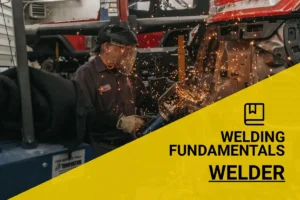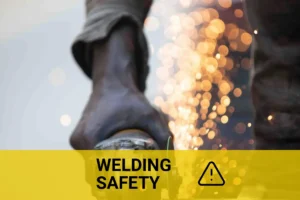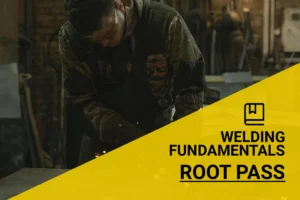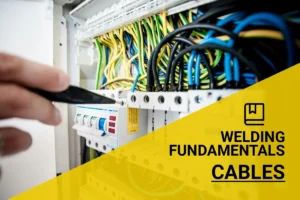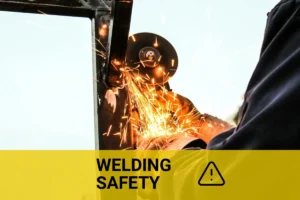How to Read Weld Symbols? Understanding Symbols, Types, and Steps
Published on: March 29, 2025 | Last modified: March 4, 2025
By: Joe Carter
Weld symbols are shorthand notations used on blueprints to communicate welding requirements. They tell you where and how to join metal pieces together.
It’s a question that often arises: how to read weld symbols? Understanding this skill is crucial. From my experience, a clear grasp of weld symbols helps prevent costly mistakes and ensures that projects meet specifications.
In this article, you’ll learn about what weld symbols are, various types of weld symbols, necessary prerequisites, steps to read weld symbols and factors influencing the reading of weld symbols. We’ll also cover problems you might encounter, aftercare and inspection tips, as well as benefits and practical use cases of weld symbols in fabrication. Lastly, we’ll discuss alternatives to reading weld symbols and answer some frequently asked questions.
Contents
- How to Read Weld Symbols?
- What Are Weld Symbols?
- Types Of Weld Symbols
- Prerequisites
- Steps for Reading Weld Symbols
- Factors Influencing the Reading Of Weld Symbols
- Common Additional Symbols in Weld Blueprints
- How to Address Common Problems With Weld Symbols
- Advanced Insights on Weld Symbols
- Top Benefits You Can Expect
- Use Cases Of Weld Symbols in Fabrication
- Are There Any Alternatives to Reading Weld Symbols?
- Frequently Asked Questions (FAQs)
- Conclusion
- Additional Reading
How to Read Weld Symbols?
Weld symbols are graphical representations showing where and how to weld. To read weld symbols, identify the arrow, tail, and various symbols. It often involves details on joints and sizes; they’re critical in construction, but can be tricky. Understanding the types of welding machines can improve your welding skills, and you might find insights on DC inverter welding machines particularly useful.
What Are Weld Symbols?
Weld symbols are notations on engineering drawings that communicate specific welding instructions to fabricators. Each symbol represents different weld types, joint designs, and finishing techniques. Did you know there are over 30 basic weld symbols used in the industry? This creates a standardized system across various projects.
Understanding how to read weld symbols is crucial for welders. I remember the first time I tackled a complex project. I had to decode various weld categories—like fillet and butt welds—just to get started! It was eye-opening and made me appreciate the importance of symbols on blueprints.
A friend used this knowledge when I helped with their welding project. They struggled with the weld callouts on their plans. We explored how to read welding symbols together, focusing on aspects like joint profiles and their specific requirements. By the end, they understood what ‘M’ means in welding symbols and how it affects weld strength. This highlighted the practical side of learning welding symbols.
Types Of Weld Symbols
What are the main types of weld symbols you’ll encounter?
-
Fillet Weld Symbols
Fillet welds join two pieces at an angle. To read the symbol, look for a triangle indicating the weld’s size. The size, measured in inches or millimeters, follows the triangle and shows the leg length of the weld.
Expanding your knowledge of welding requires knowing how to read weld symbols effectively.
-
Groove Weld Symbols
Groove welds join two pieces by forming a V or U shape. To interpret groove symbols, check for a letter indicating the groove type, such as ‘V’ or ‘U.’ Next, you’ll find dimensions for depth and angle, guiding the weld preparation. Understanding the components and mechanisms of how a welding machine operates is crucial for executing precise groove welds.
-
Plug Weld Symbols
Plug welds fill holes in one piece to bond with another. When reading this symbol, you’ll see a filled circle indicating the hole. Follow it with measurements for size, defining how deep and wide the weld should be.
-
Spot Weld Symbols
Spot welds create small joins at specific points. When interpreting this symbol, look for a filled circle representing each weld. The number of spots per joint may be indicated nearby, helping you visualize the required layout.
-
Seam Weld Symbols
Seam welds run continuously along a joint. To read the symbol, check for parallel lines signaling a seam. Details include the width and minimum length necessary to make the connection, often useful for sheets or plates. Seam welding techniques have evolved to improve efficiency and quality in various applications in the welding industry. For those interested in exploring the intricacies of this method, what is seam welding offers a comprehensive explanation.
You should now have a good understanding of various weld symbols and their meanings. In the next part, we’ll discuss prerequisites.
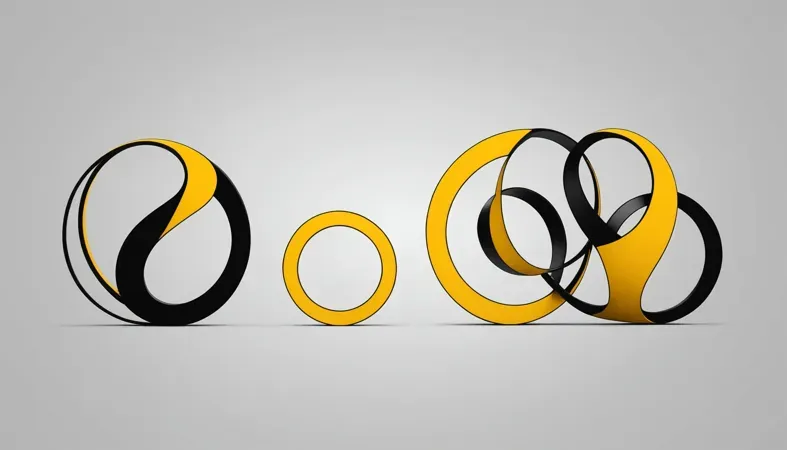
Prerequisites
What do you need to prepare for?
- Welding Symbols Chart: You need a complete chart, like “Welding Symbols for Fabrication” by Lincoln Electric. It’s crucial for visually decoding symbols before you start.
- Reference Guide: Obtain the “Welding Symbols” PDF by AWS. This document explains each symbol’s meaning, vital for accurately understanding weld instructions.
- Good Lighting: Ensure you have strong lighting, such as a 1000-lumen LED lamp. Good lighting’s essential for spotting fine details in the symbols.
- Notebook or Sketchpad: Keep a notebook nearby for jotting down translations and observations. It reinforces your understanding of what you learn.
We have now covered the necessary prerequisites. Next, we will examine the steps involved in interpreting weld symbols.
Steps for Reading Weld Symbols
Now, we’ll cover steps for understanding welding symbols effectively.
-
Identify the Basic Components
Start by recognizing the main parts of a weld symbol. Each symbol has a reference line, an arrow, and the symbol for the type of weld. For instance, a fillet weld symbol appears as a triangle. Weld symbols follow American Welding Society (AWS) guidelines with a standardized approach. To enhance understanding of these techniques, it’s crucial to know the difference between welding and soldering.
Understanding these components helps you quickly grasp the specifics. If you see a triangle pointing toward a line, it signifies a fillet weld. Quick tip: Pay attention to the arrow’s orientation, as it indicates the side to weld!
-
Read the Reference Line
The reference line contains vital details—it’s more than just a line. It usually has data on types of welds, and either side of the reference line often indicates different welds. You might see numbers next to the arrow, indicating the weld’s size in millimeters (Mm) or inches (In). For example, a number 6 next to a fillet weld suggests a size of 6 mm (0.24 In).
Concentrate here to avoid mistakes in your weld size. You don’t want to end up with something too thick or thin. I’d make a quick note of any numbers that stand out, as size plays a crucial role in weld strength. The selection of appropriate welding rods is essential to this process, where knowing how many 1/8″ 7018 rods are in a pound can guide your materials estimation accurately.
-
Interpret the Welding Symbol
Next, analyze the actual welding symbol. Various shapes—triangles for fillet welds or rectangles for butt welds—convey different meanings. You’ll also find details like ‘M’ for ‘Symbol Indicates’ and ‘Z’ for ‘Depth of Fusion,’ which influence your welding approach. Look up any unfamiliar symbols you encounter.
Review a chart that outlines these symbols. While many symbols seem straightforward, their meanings can vary, impacting your weld’s overall quality. My advice? Use a welding symbols chart as a reference to quickly decipher any unfamiliar symbols.
-
Analyze Additional Callouts
Check for any additional annotations or callouts above or below the reference line. These often hold essential data like the weld’s type, size, and specific requirements such as finishing details or cleaning procedures. Sometimes, they specify conditions like ‘free of defects,’ which is critical.
This information can drastically change your workflow. Missing these details can lead to costly mistakes. Don’t rush through this step! Proper analysis here saves time and materials later.
-
Recognize Entries for Specific Processes
Symbol entries might indicate specific welding processes or fillers, like MIG or TIG. Each can vary based on job requirements. For example, a notation might mention ‘MIG – 4047,’ directing you to use a certain filler for optimal results.
Stay alert for special instructions here. By recognizing what each entry means, you’ll make informed decisions. Misinterpretation could lead to technical issues nobody wants on a project. Be thorough!
We have now covered the steps for interpreting weld symbols. Let’s look at the factors that affect how to read weld symbols.
Factors Influencing the Reading Of Weld Symbols
What factors impact your ability to interpret weld symbols effectively?
-
Welding Standards
Different regions follow welding standards like AWS, ISO, or ASME. For example, AWS D1.1 promotes consistency, ensuring you understand the meanings of weld symbols in context.
-
Material Types
Weld symbols vary based on materials like steel, aluminum, or nickel alloys. Each material has unique requirements that influence how you assess joint strength and welding techniques.
-
Weld Quality Requirements
Weld quality, such as stressed or non-stressed joints, affects visual interpretations. Pay close attention to symbols like “M” for a bend test mark or “Z” indicating a specific quality control zone.
-
Experience Of the Reader
Your experience level shapes your understanding of weld symbols. Experienced welders quickly recognize symbols, while beginners may struggle with common indications.
-
Specific Industry Practices
Different industries have unique practices, making some weld symbols more common than others. Familiarity with industry-specific standards helps you decode weld symbols accurately.
Common Additional Symbols in Weld Blueprints
When reading weld symbols, you might find additional notations that provide further details. Let’s break down some key symbols and their meanings.
End Preparation Symbols
- Bevel: This symbol indicates that edges should be bevelled to create a groove for welding.
- Flange: Often seen in structural joints, this indicates a flanged edge to enhance strength.
- Square: This notation is crucial when square cuts are needed, highlighting the edge treatment required.
Indications for Testing
- NDT (Non-Destructive Testing): Symbols indicating that inspections like ultrasonic testing are required.
- Visual Inspection: Often noted by a simple checkmark to indicate that a visual inspection should be performed after welding.
Additional Callouts
Pay attention to these common callouts:
| Callout Symbol | Description | Importance |
|---|---|---|
| † | Free of Slag | Indicates a clean weld surface must be ensured before inspection. |
| ⚠️ | Warning Note | Signifies cautionary steps or special considerations during the weld process. |
How to Address Common Problems With Weld Symbols
Let’s examine issues related to weld symbols that can cause confusion and errors.
-
Misinterpretation Of Symbols
Weld symbols vary between standards. To identify misinterpretations, compare the symbol with established guides. Clear confusion by consulting the AWS A2.4 standard.
-
Inconsistent Weld Specifications
Inconsistent weld symbols can harm projects. Double-check documentation and confirm specifications with the design team to align expectations.
-
Lack Of Standardization
The absence of standard weld symbols can lead to uncertainty. Review industry standards, like ISO or AWS, and adopt unified symbols across projects to resolve disputes.
-
Confusion Over Additional Notes
Weld symbols often include extra notes that can be confusing. Look for these details and compile a summary for quick reference to streamline processes.
-
Insufficient Training on Symbols
Weld symbols require proper training. Evaluate your team’s knowledge to identify this issue. Consider conducting training sessions focused on reading weld symbols.
Advanced Insights on Weld Symbols
Let’s dive deeper into some advanced aspects of understanding weld symbols and their real-world applications.
Understanding Symbol Placement
The placement of weld symbols on a blueprint is as important as the symbols themselves. Each location provides context about the weld’s requirements. Here are a few critical points:
- Above the Reference Line: Symbols placed here indicate welds that need to be made on the far side of the connection.
- Below the Reference Line: These symbols indicate welds that should be applied to the near side of the joint.
- Ahead of the Arrow: Placement signifies that the weld should start at this point and proceed toward the arrowhead.
- Behind the Arrow: This indicates the weld should begin at the arrowhead and extend backward.
Common Misunderstandings
Many welders may confuse specifics within weld symbols. Understanding these details can save time and clarify instructions:
| Symbol Feature | Common Misinterpretation | Correct Understanding |
|---|---|---|
| Diameter Symbols | Assuming the diameter is for the entire joint | The diameter often refers to the size of the weld itself, not the connected materials. |
| Weld Length | Reading length as a total for multiple joints | Length refers to each individual weld not the continuous runs. |
| Arrow Orientation | Believing the arrow has no significance | The arrow indicates which side requires the weld and can specify different processes. |
Practical Applications in Industry
The understanding of weld symbols is not just theoretical; it plays a significant role in various industries:
- Aerospace: Weld symbols ensure precise instructions for high-stakes parts, requiring perfection in every weld.
- Automotive: Utilizing weld symbols promotes structural integrity in components like frame joints and while assembling vehicles.
- Oil and Gas: Pipe fabrication relies heavily on proper interpretation of weld symbols to ensure safety and reliability in transportation systems.
Top Benefits You Can Expect
The main benefit of knowing how to read weld symbols is clarity. For instance, a friend used this skill when they needed help with a complicated project at work; it made everything much easier.
Moreover, understanding weld symbols boosts safety, saves time during fabrication, and enhances teamwork by reducing errors. By mastering these symbols, you significantly improve your ability to communicate effectively with other welders and engineers, which is crucial for welding fundamentals.
Learning about the components of a GMA welding system is essential for comprehensive welding knowledge.
Use Cases Of Weld Symbols in Fabrication
I’ve seen weld symbols play a crucial role in projects. They’re not just lines and shapes; they have real-world applications such as:
- Quality Control: Weld symbols help inspectors verify weld specifications on critical structures like bridges and pipelines. This ensures safety and compliance; they’re widely used in the construction industry.
- Manufacturing Settings: In assembly lines, weld symbols guide workers on how to join parts accurately. This reduces errors and saves time, making them essential in mass production environments.
- Education and Training: Welding schools teach students to read symbols. Understanding these symbols is crucial for future welders; this application is common in vocational training.
- Repair and Maintenance: Knowing how to read weld symbols helps technicians restore machinery. This application is vital in industries where downtime costs money, like manufacturing and automotive repair.
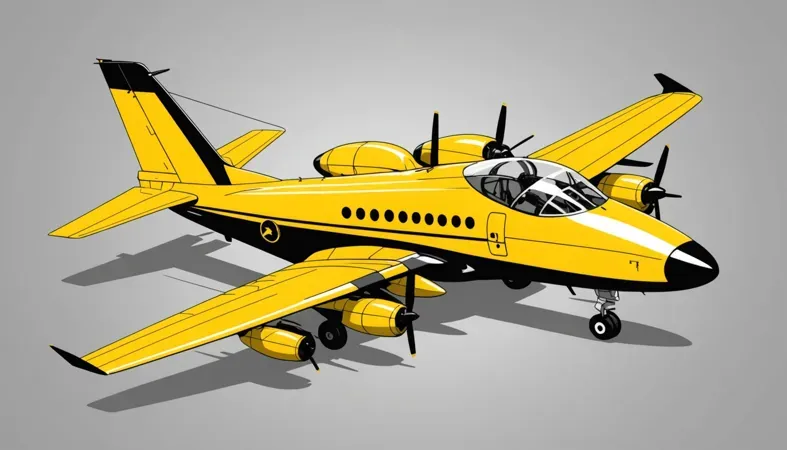
Are There Any Alternatives to Reading Weld Symbols?
You don’t always have to dive into the complexities of reading weld symbols. Sometimes, using a weld symbol chart, like the “Welding Symbols Drawings PDF,” can simplify things. From both successes and failures, I’ve learned that visual tools can make interpreting weld info much clearer.
Additionally, software like “Weld Quality Inspector” provides detailed welding symbols with just a click. This can save time and reduce confusion. But remember, having a knowledgeable mentor can also greatly enhance your understanding of welding symbols without overwhelming you!
Frequently Asked Questions (FAQs)
Now let’s look at some common questions I typically get asked about welding and weld symbols.
How Do You Read Welding Measurements?
You read welding measurements by understanding the scales and units used in construction and manufacturing. Most measurements use millimeters (Mm) or inches (In), depending on the region. Accurate reading ensures your welds meet specified tolerances, which is crucial for structural integrity. To achieve good results, consider reviewing the power requirements of a welder.
What Do the Numbers on a Weld Symbol Mean?
The numbers on a weld symbol indicate critical details about the weld size and type. Typically, you’ll find depth or diameter measurements expressed in mm or inches. Knowing these help you achieve the right strength and performance in weld joints.
What is a Weld Indication?
A weld indication provides details on where and how to apply welds in construction drawings. They specify types of welds required and joint configurations. Understanding these indications enhances your ability to execute complex welding tasks accurately.
What Does ‘M’ Mean in Welding Symbols?
‘M’ in welding symbols stands for the metric system, specifically millimeters. It helps differentiate between metric and imperial measurements, ensuring clarity in drawings. Knowing this can prevent costly mistakes in equipment and material tolerances.
What Does ‘Z’ Mean in Welding Symbols?
‘Z’ represents a specific weld preparation or edge profile in a welding symbol. It communicates how the metal edges must be shaped prior to welding. Understanding this detail helps achieve proper penetration and fusion in the weld, essential for strength.
How to Learn Welding Symbols?
To learn welding symbols, start with sketches and diagrams that display various symbols. Use online resources, manuals, or actual blueprints for practice. Familiarity helps you quickly interpret drawings, crucial for your welding projects.
Conclusion
We’ve gone through a lot, thank you for sticking it out. We covered weld symbols, types of weld symbols, prerequisites, and the steps for reading weld symbols. We also covered factors influencing the reading, common problems, aftercare, inspection, and advanced tips, plus the benefits and use cases of weld symbols.
In simple terms, reading weld symbols means you can understand welding blueprints. Use what we covered about the various types of symbols, their interpretations, and troubleshooting methods to make sense of those complex drawings. Happy welding!
For further insights and in-depth information, What is Welding is an excellent resource to explore.
Additional Reading
- American Welding Society. (2015). AWS D1.1/D1.1M: Structural Welding Code – Steel. Miami, FL: AWS.
- European Welding Federation (EWF): https://www.ewf.be
- Little, R. L. (1999). Welding and Welding Technology. New York, NY: McGraw-Hill Education.
Joe Carter is a retired welding professional with over 40 years of hands-on experience in the industry, spanning ship repair, structural welding, and even underwater projects. Joe is a master of MIG, TIG, and Stick welding. Passionate about mentoring the next generation of welders, Joe now shares his decades of expertise and practical insights to help others build rewarding careers in welding.
American Welding Society, Fabrication Guidelines, How To Read Weld Symbols, Types Of Weld Symbols, Types Of Welds, Weld Inspection, Welding, Welding Standards, Welding Symbols, Welding Techniques
